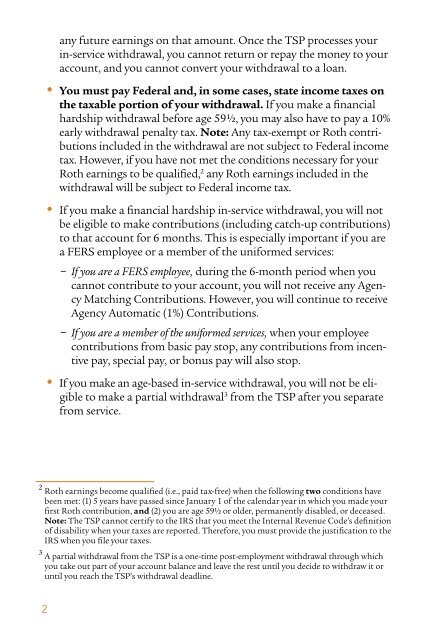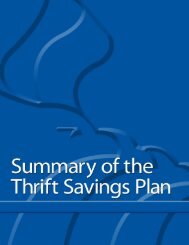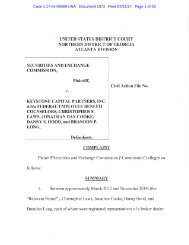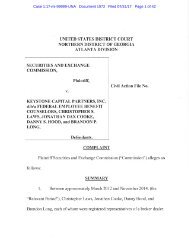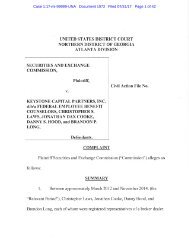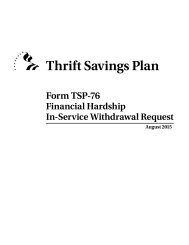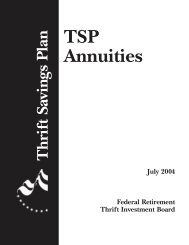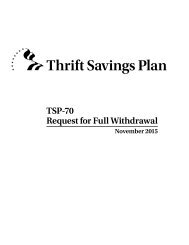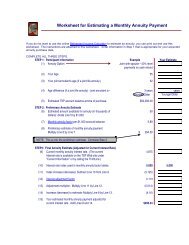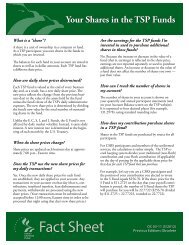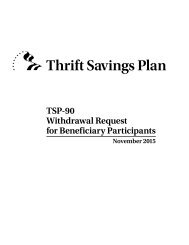In Service Withdrawals (TSPBK12)
You also want an ePaper? Increase the reach of your titles
YUMPU automatically turns print PDFs into web optimized ePapers that Google loves.
•<br />
•<br />
any future earnings on that amount. Once the TSP processes your<br />
in-service withdrawal, you cannot return or repay the money to your<br />
account, and you cannot convert your withdrawal to a loan.<br />
You must pay Federal and, in some cases, state income taxes on<br />
the taxable portion of your withdrawal. If you make a financial<br />
hardship withdrawal before age 59 ½, you may also have to pay a 10%<br />
early withdrawal penalty tax. Note: Any tax-exempt or Roth contributions<br />
included in the withdrawal are not subject to Federal income<br />
tax. However, if you have not met the conditions necessary for your<br />
Roth earnings to be qualified, 2 any Roth earnings included in the<br />
withdrawal will be subject to Federal income tax.<br />
If you make a financial hardship in-service withdrawal, you will not<br />
be eligible to make contributions (including catch-up contributions)<br />
to that account for 6 months. This is especially important if you are<br />
a FERS employee or a member of the uniformed services:<br />
−−<br />
If you are a FERS employee, during the 6-month period when you<br />
cannot contribute to your account, you will not receive any Agency<br />
Matching Contributions. However, you will continue to receive<br />
Agency Automatic (1%) Contributions.<br />
−−<br />
If you are a member of the uniformed services, when your employee<br />
contributions from basic pay stop, any contributions from incentive<br />
pay, special pay, or bonus pay will also stop.<br />
• If you make an age-based in-service withdrawal, you will not be eligible<br />
to make a partial withdrawal 3 from the TSP after you separate<br />
from service.<br />
2 Roth earnings become qualified (i.e., paid tax-free) when the following two conditions have<br />
been met: (1) 5 years have passed since January 1 of the calendar year in which you made your<br />
first Roth contribution, and (2) you are age 59½ or older, permanently disabled, or deceased.<br />
Note: The TSP cannot certify to the IRS that you meet the <strong>In</strong>ternal Revenue Code’s definition<br />
of disability when your taxes are reported. Therefore, you must provide the justification to the<br />
IRS when you file your taxes.<br />
3 A partial withdrawal from the TSP is a one-time post-employment withdrawal through which<br />
you take out part of your account balance and leave the rest until you decide to withdraw it or<br />
until you reach the TSP’s withdrawal deadline.<br />
2


